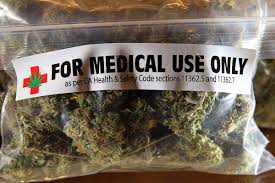Lesson 10: Cannabis Use Disorder
Attention

A good article from a nursing perspective but really applicable to all health care workers.
Learning Outcomes
Upon completion of this lesson's material, students will
- Be able to summarize current research on marijuana, risks, benefits and medical uses
- Be able to describe treatment issues with cannabis
- Understand why cannabis is DEA schedule 1 and be able to compare and contrast cannabis to other scheduled and unscheduled substances
Teaching
CANNABIS
Cannabis is another old companion of humanity!
Criminalization in the 20th Century was another well-intentioned effort of the Progressive Movement that elected reformers like Theodore Roosevelt and Woodrow Wilson: the desire was to improve the health and welfare of U.S. citizens. This Progressive Movement was part of the general belief in the 19th and early 20th Centuries in the perfectability of humankind and society. This belief, the apex of modern thinking, has now been mostly replaced by the post-modern view of relativism, subjectivism and learning to live with imperfection.
It wasn't until almost 1970, partially in response to the increasing popularity of marijuana with the Counterculture Movement, that cannabis was moved into DEA Schedule I which ended any possibility of prescribing it or for all practical purposes even researching it. California in 1996 was the first state to approve medical marijuana which it did through a referendum. Ironically referendums are another reform advocated by the Progressive Movement. Physicians are increasingly challenging the wisdom of State Legislatures or voters deciding medical questions about the effectiveness of drugs and what conditions can be treated.
Marijuana may be "safer" than other substances in the sense of being less toxic. The LD 50 for marijuana is estimated at 1:20,000---that one would have to smoke 20,000 joints to overdose. However, we are just beginning to get good scientific evidence on other risks
Not much research in the past because cannabis was Schedule I and researchers couldn't get samples from NIDA to use for experiments. Also as with much drug research, most studies use a post hoc design which produces correlations but no causal inferences (e.g. that youthful heavy use is correlated with later intellectual problems and poorer educational performance but leaving open the question of whether the smoking produced the intellectual impairment or whether it was other factors such as this group of adolescents being generally less involved in motivation for academics).
There is a growing body of evidence, though, that regular heavy use of marijuana can produce addiction. Again, as with other substances, it is about 10 to 15% of smokers who go on to addiction which we have begun to believe is the proportion genetically predisposed to addiction.
There is no doubt that recent use of marijuana impairs driving performance during the period of intoxication (3 or 4 hours generally) but the question of how much impairment can be tolerated (with alcohol, we allow a Breath Alcohol Content of .08% which is actually pretty impaired) and how to legally measure impairment from marijuana remains open. Currently, the law in Maine is that if an officer has probable cause to stop a vehicle on suspicion of impairment (e.g weaving or missing a stop sign) and suspects the driver of use of a substance other than alcohol, the officer administers a field sobriety test and may call in a special officer trained in detecting other substance use, and if the person fails these tests a blood sample may be required. If marijuana is present and the driver cannot produce evidence that the impairment was due to some other cause (e.g. a mechanical problem with the car), the Court will convict of Operating Under the Influence. Most people who can afford a good lawyer do not get convicted of OUI but may plead to a lesser charge of Operating to Endanger. If the person refuses the blood test, they automatically have their license revoked by the Secretary of State although they may not be convicted of OUI.
If convicted of OUI, the driver has to attend the Driver Education and Evaluation Program where s/he is given education about using and driving, addiction and healthy use, and is given a paper and pencil test that may result in a referral for evaluation for the need for substance abuse treatment. If the evaluation is positive, the driver will have to complete treatment (generally 6 to 8 weeks of OP) to get their license back.MEDICAL USE

Cannabis has two active ingredients that have medicinal value. Tetrahydrocannabinol (THC) is available as Marinol and Cesamet and is recognized as medication effective for appetite issues associated with HIV and cancer and for spasticity associated with multiple sclerosis. Sativex has the other active ingredient in marijuana, cannabidiol, and is in the process of approval as a pain med. Cannabidiol may also help with seizure activity. Other medical uses for cannabis are currently under investigation.
Smoked marijuana has the advantage of quicker onset of action and of self-titration of dose to symptom. The disadvantage is the route of administration which can cause respiratory problems and second hand smoke issues. Marijuana baked products have been shown to be risky in households that have children present and in Colorado many children have been brought to ERs suffering from intoxication from eating marijuana baked goods or candies. Also cases of cannabis-induced hyperemesis are now being reported.
Recreational marijuana use may be no riskier than recreational alcohol use for most people, but research is very slim on this topic. Many smokers do not develop preoccupation, loss of control or issues at work, in school or at home. But do we want a society increasingly characterized by intoxication as a primary means of recreation and relaxation?
Cannabis Use Disorder may be suspected when the person exhibits psychiatric symptoms (anxiety, depression, irritability) with use or when withdrawing ( daily smokers may experience withdrawal as soon as 3 hours after last use and like heavy cigarette smokers and heavy drinkers may eventually get to the point where they are pretty much continuously in withdrawal).
As with other substances, young people are most at risk for developing problems with any regularity of use and there is increasing evidence that there may be enduring intellectual impairment with heavy adolescent use. One of the risks of legalization is increased adolescent use although a recent review of states where it is legal shows this did not occur.
There is good evidence that cannabis use is linked to psychosis risk in young people. Click HERE to review an article titled Link Between Adolescent Pot Smoking and Psychosis Strengthens in Scientific American.
There is also cannabis-induced psychosis (usually paranoid) which may occur in people who have a schizotypal personality structure and usually will clear up with a few days of abstinence. Some consumers who have a paranoid schizophrenic diagnosis report that smoking marijuana helps their symptoms although clinical experience would actually suggest exacerbation. This may be because the THC in marijuana aggravates psychosis while the cannabidiol may actually relieve it. Some varieties of marijuana have more or less of these two ingredients and depending on the balance may exacerbate or alleviate psychotic symptoms.
In any case, for MHRT/Cs, consumer use of cannabis presents a challenge and the best approach is simply to work with the client to experimentally determine their decision making regarding use.
Often clients will be open to a harm reduction approach although, like most people in Maine, current attitudes towards pot tend to be positive or indifferent. Many people may see it as a harmless “natural” product and are uninformed about the risks of use. This unreasonable positive attitude may be a reaction formation to thedemonization of pot and its users in past years. Hopefully the public view will become more moderate and reasonable as people become better informed. But the current attitude is sometimes a barrier to treatment when the client’s peers try to get him or her to stop treatment and return to use. When this happens, we can use the tools of Motivational Interviewing to help our client to look at what is best for him or her rather than giving in to peer pressure. With Motivational Interviewing we look at the pros and cons of continued use and help the client to make a reasonable decision for or against change.
One reason adolescent use in Maine and the rest of the country is so high is that parents are using too. Remember the most significant factors influencing adolescent use are parental modeling and parental rules. Most teens say, “If dad and mom are getting high, why shouldn’t I?”
Adolescent treatment is currently primarily OP and in Central Maine there are few resources for anything else. Besides CBT and relapse prevention, we work with teens on resisting peer pressure and finding goals for their future.
Click HERE to learn about the Day One Program. One of these programs is at the Goodwill School (the same location as KVCC!)
Adult treatment may be in an IOP followed by OP or in OP exclusively and like other substances is usually CBT and relapse prevention.
Available Treatments for Marijuana Use Disorders | National Institute on Drug Abuse (NIDA)
One particular problem with treatment of this substance is the overly positive social attitude towards this drug which makes it difficult to maintain motivation for treatment even when the person is having problems due to use.
Cannabis Withdrawal
When long-term cannabis users stops and experiences anxiety, irritability, depression, insomnia and vivid dreams. Part of the reason is that THC connects to the area in the brain with cannabis receptor sites in hypothalamus that regulates sleep and hunger. People who have had chronic marijuana use do not have a lot of vivid dreams because marijuana decreases the amount of REM sleep, so when they stop, they have strange and vivid dreams. It is a Myth that THC not addictive.
Assessment
Lesson 10 Discussion (for online class only)
Legalization of Marijuana: state your position and defend it with science and reason. Respond to other class members' positions and give them feedback on their statements. Work as a class towards a one sentence statement that everyone can live with.
Lesson 10 Assignment
For this assignment you are going to assist a client who has a MEDICAL CARD for medical marijuana. Let's say that the client has chronic pain. Write a short paper describing how you would assist them. One resource you might use is the State directory of medical marijuana dispensaries. But you will have to do your own research on the Net to answer this question since the list of dispensaries is not complete. You should also consider in your paper issues about helping the client to think through their complete pain management strategy and how to safeguard against addiction. Also consider various kinds of marijuana and which might be the best for chronic pain.
In addition, consider the app in the iPad Integration section below (Pain Diary and Community - Catch My Pain). Download and review this app and describe how you might integrate the use of this app into your client's treatment of chronic pain.
Check out this app on the management of chronic pain. Pain Diary and Community - Catch My Pain https://itunes.apple.com/us/app/pain-diary-community-catchmypain/id578988873?mt=8 |

